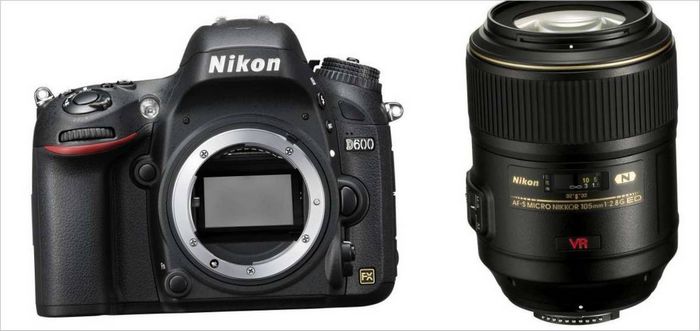Nowadays you can get the best possible photo quality from a DSLR with a full-frame sensor. The size of this matrix is the same as a traditional 36x24mm film frame. Not long ago these cameras were made only for professionals and were very expensive. At the end of 2012, Nikon released the new Nikon D600 camera, meeting the needs of many photographers, from keen amateurs to professionals. The main advantages of the Nikon D600 are its full-frame sensor, high continuous shooting speed and good image quality.

-
Maximum image quality with a full-frame 36x24mm film-format sensor. Professional quality for the price of an amateur camera.
-
Highly detailed image thanks to 24.3 megapixel sensor. The ability to freely frame images.
-
Retaining all the nuances in the light and dark areas of the frame with the new powerful EXPEED 3 processor. Getting beautiful subtle color tones.
-
The ability to shoot at high sensitivity without noise allows you to take great pictures in low light without using flash.
-
High-speed continuous shooting at up to 5.5 frames per second puts the Nikon D600 on par with professional cameras.
Photo resolution reached 24.3 million pixels, which allows you to get large prints for exhibitions or interiors, freely crop trim the image while maintaining high detail pictures.
Previously, only professional Nikon D4 designed primarily for professional reporters , Nikon D800 a very high-resolution camera for studio and landscape photography were equipped with full-frame sensors. The advanced technologies embodied in these models are used in the new Nikon D600.
Let’s start with the new EXPEED 3 processor that quickly handles the large amount of information from the sensor and allows continuous shooting at up to 5.5 frames per second. Converts analog signals into digital at lightning speed, so you can capture as much information as possible in both highlights and shadows.
the maximum length of a burst in the most complex combination of RAW+JPG is about 9-10 frames, and it takes about 24 seconds to process and record. When shooting in JPG mode, the number of shots in a series increases, while the recording time decreases.
Another advantage of the Nikon D600 – the ability to shoot at high sensitivities without loss of detail. Maintains a natural light pattern in the image without using flash and produces decent pictures in low light. I took a series of pictures at different sensitivities and compared the results to the same pictures taken with a top class reporter camera.
All pictures taken on Nikon D600 with sensitivity from 100 to 800 units. ISO sensitivity is virtually unchanged. The following series was taken at sensitivities up to 3200 units. Noise appears in shadow areas which, when properly exposed, is unnoticeable.
The sensitivity of 6400 ISO units is also quite workable. Further boosting the sensitivity is possible if you take your pictures to the Internet or print media at a significant reduction, and before doing so use specialized programs to suppress noise, enhance visual acuity and preserve detail.
The capabilities of camera software are not limited to noise reduction. According to the manufacturer, the system “Active D-Lighting” helps to work out the details of the image in especially contrast scenes in the brightest and darkest areas, without losing color saturation. And if the ability of this option in a particularly contrasty situations is not enough, you can use the mode HDR dynamic range expansion .
It should be noted that all these options for computer editing and image processing directly in the camera are only applicable to files shot in JPG format, and also if the pictures taken in RAW-NEF format so beloved by our photomasters are processed by Nikon proprietary software.

Great review! I’m really interested in the Nikon D600’s sensor performance. Could you please tell me more about its low-light capabilities and dynamic range? Also, does it have any noticeable noise at high ISOs? Thanks!
Can you provide more information about the sensor in Nikon D600? I’m interested in knowing about its resolution, dynamic range, and low light performance.
Great review so far, but I’m curious about the performance of the sensor in different shooting conditions. How does the Nikon D600 handle low light situations and high ISO settings? Can it capture sharp and noise-free images or does noise become a problem? Additionally, how does the dynamic range of the sensor hold up in challenging lighting scenarios? Looking forward to reading more about it!
Can you provide any insights on the sensor performance of the Nikon D600 in your review? How does the full frame reloading feature enhance the overall shooting experience?